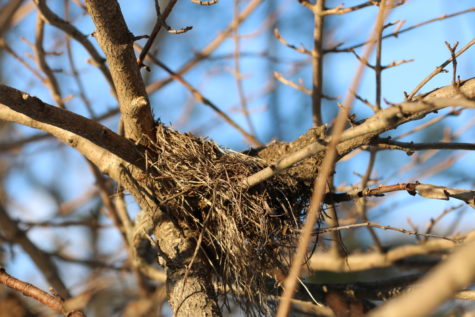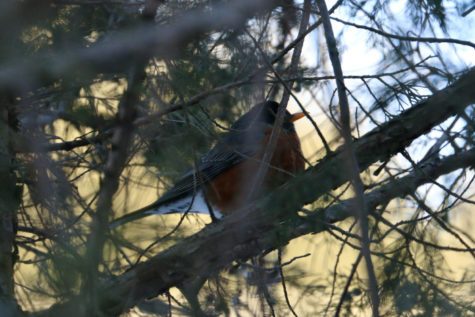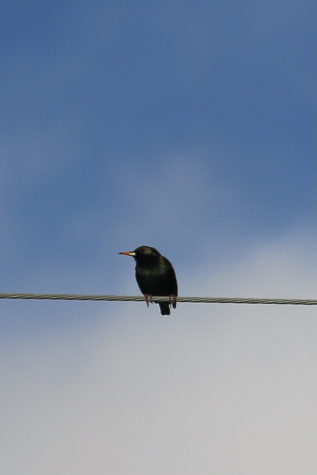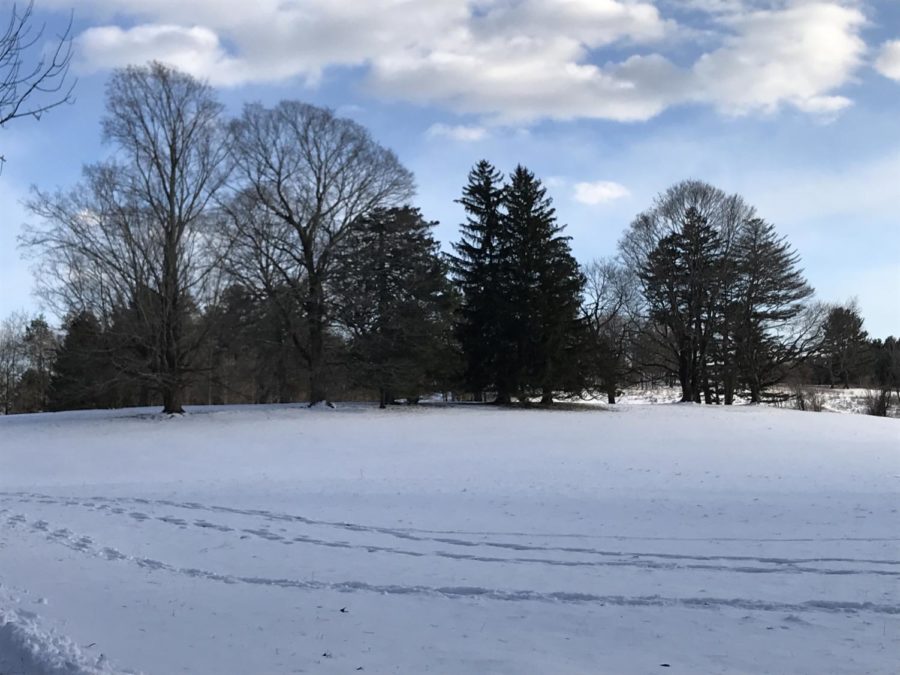Winter Wonders: Exploring Nature in Your Backyard

Massachusetts has a lot of options for winter activities to get people out of their houses: skiing, snowboarding, snowshoeing, hiking, and many more. If you’re looking for something new to do, you don’t have to look very far. One thing you could try is watching the nature in your own backyard.
It may sound like a boring proposition, but once you take a moment to sit, be quiet, and look around (or look around while walking your dog, walking to the school bus, during anything you can do outside), you will be amazed at what you can find around your home. Even if you’re still skeptical, let me walk you through some things to look for that will practically guarantee some fun sightings.
Landscaping is always a good place to start. While bushes, hedges, and trees are the realm of insects and spiders in the summer, small songbirds take over in the winter months. House and Chipping Sparrows, Goldfinches, House Finches, Northern Cardinals, Black-Capped Chickadees, and other common “backyard” birds can be observed in these horticultural havens. In stands of large trees look out for woodpeckers tapping away for insect larvae, or even a Sharp-Shinned or Cooper’s Hawk. These raptors prey on small birds, so be on the lookout for flocks of birds flying quickly, there may be a hawk chasing them. Another critter to look out for is a Flying Squirrel. The aerial acrobats can be fairly elusive at any time of year, but winter is the best time to see them. If you have a bird feeder, you may be having a nighttime patron. While there is plenty of food in the summer, the supply lessens in the winter months, so Flying Squirrels sometimes have to look to humans for help.

While you’re looking at the plants, look deeper: the ground. While it may not seem like the most attractive place, there are many animals you can find there. Several birds can be found there such as Mourning Doves, Dark-Eyed Juncos, or Wild Turkeys. These birds often hang out around bird feeders but can also be found under fruit trees or scratching at leaf litter. Birds aren’t the only animals that can be found on the ground in winter. Gray Squirrels are easily found just about anywhere digging around for cached food. Red Squirrels are harder to find (they are fairly shy), but it is possible. If you want to see one, go somewhere with a lot of conifers and look for piles of pine cone shells. These piles are called “middens” and are the leftovers from Red Squirrels eating. Raccoons, Coyotes, Red Foxes, and Opossums are also mammals you can find in your neighborhood, but not during the day. The best time to see them is at dusk (or dawn if you’re up that early).

If there is a body of water near you, take a trip there to see some amazing waterfowl. Massachusetts is in the middle of the Atlantic Flyway which is a science-y way of saying it’s on the path many birds take when they migrate. Waterfowl often use ponds or lakes as stopovers where they can rest for a while and fuel up before the next leg of their journey. Some waterfowl you can see in ponds include Canada Geese, Mute Swans, Mallards, Hooded and Common Mergansers, Buffleheads, or American Coots (which aren’t waterfowl, but they look very similar). You can also see muskrats or beavers lodges in these ponds. Beaver lodges are massive, often spanning up to 7 feet wide. The most common winter muskrat lodges are little “feeding huts”. Since these small rodents cannot eat while they swim, they must go ashore. With the lack of vegetation in the winter, muskrats build small (3-4 feet wide) lodges and platforms all over their territory for safe eating spots.
There are many animals that you can see almost anywhere, during any time of the year. So, while the flamboyant summer migrants head south for the cold months, these “average” critters take the spotlight. They include Blue Jays, Crows, Eastern Squirrels (they were mentioned earlier for the ground section, but anyone with bird feeders knows how adaptive they can be), Tufted Titmice, Red-Tailed Hawks, Dark-Eyed Juncos, European Starlings, White-Tailed Deer, and Carolina Wrens.
Even if you would rather hit the slopes than follow this article, just keep all this information in the back of your mind. Even if you don’t intentionally go look for nature in your yard, just be open to noticing new things. You never know what might stem from a simple observation.
Not sure where to start or don’t know what you’re looking for? Here are some links that you can use to familiarize yourself with some of the animals mentioned in this article. There are also some links to help you see what you can do to observe backyard nature without harming it.
Birds:
https://www.massaudubon.org/learn/nature-wildlife/birds/fall-winter-birdshttps
https://www.massaudubon.org/learn/nature-wildlife/birds/not-so-common-winter-birds
https://www.massaudubon.org/learn/nature-wildlife/birds/commonly-confused-birds
Mammals:


